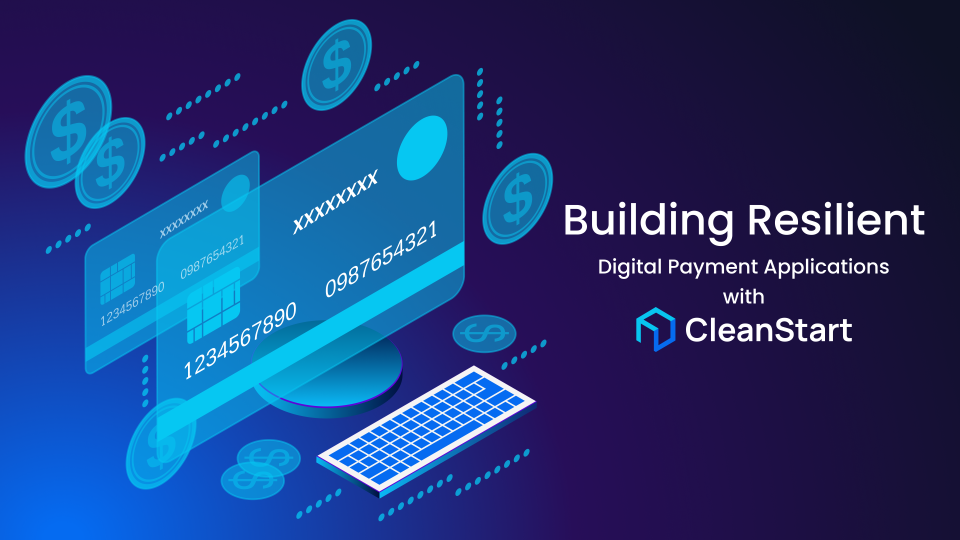
The Reserve Bank of India (RBI) has issued Master Directions on cyber resilience and digital payment system controls emphasizing a "Secure by Design" approach under application security for digital payment systems. This directive underscores the growing importance of robust security measures in India's fast-growing digital payments landscape. It also marks a significant shift toward integrating security at every stage of the software development lifecycle (SDLC). This isn't merely a compliance checkbox; it's a fundamental necessity in today's threat landscape. This blog explores the technical complexities of implementing the framework, addressing key challenges, and presenting CleanStart as a robust solution.
“CleanStart, a repository of secure, hardened, and compliant container images and packages, to streamline development and bolster application security.”
Deconstructing "Secure by Design"
"Secure by Design" is more than just a concept, it’s a fundamental approach to software development. It emphasizes integrating security at every stage of the Software Development Life Cycle (SDLC), from initial planning to deployment and ongoing maintenance. This approach includes:
- Proactive Threat Management: Shifting from reactive patching to actively identifying and mitigating vulnerabilities. This involves continuous security assessments, penetration testing, and in-depth code analysis.
- Secure Coding Practices: Following established secure coding frameworks like the OWASP Top 10, utilizing static and dynamic application security testing (SAST/DAST) tools, and fostering a security-first mindset within development teams.
- Inventory Management: Maintaining a record of all key roles, information assets, and third-party service providers
- Granular Access Controls: Strengthening authentication and authorization using role-based access control (RBAC) and multi-factor authentication (MFA) to enforce the principle of the least privilege for sensitive data and functionalities.
- Data Protection Measures: Safeguarding data through encryption (both at rest and in transit) with strong cryptographic protocols and key management solutions. Additionally, techniques like tokenization and data masking further enhance data security.
- Comprehensive Security Testing: Implementing a multi-layered security validation approach, including penetration testing, fuzzing, and regular security audits, to proactively detect and address vulnerabilities before production deployment.
- Robust Incident Response Strategy: Developing a well-structured incident response framework that covers detection, containment, mitigation, recovery, and post-incident analysis to ensure swift and effective responses to security threats.
Challenges in Implementing Secure by Design
Open source has become a dominant force in modern application development, with a vast majority of software projects leveraging open-source libraries, frameworks, and tools. Popular frameworks like React, TensorFlow, and Kubernetes have revolutionized web development, machine learning, and cloud computing, respectively.
While open-source components offer numerous advantages, they introduce a significant security challenge. Most modern applications, including digital payment systems, rely heavily on open-source components and containerized environments. While this accelerates development, it also introduces critical security risks:
- Pre-existing vulnerabilities in public container images can expose applications to exploitation.
- Non-compliance with security regulations can result in penalties and operational disruptions.
- Software bloat increases the attack surface, making systems harder to secure.
- Inconsistent patching leaves systems vulnerable to zero-day threats and exploits.
Use of untrusted or malicious container images, increasing the risk of supply chain attacks. Maintaining an up-to-date inventory and patching these vulnerabilities can be a significant undertaking. Not to mention the complexity of modern applications, lack of resources and expertise, time-to-market pressure (to consistently release new features and functionalities), and more.
The Secure by Design mandate requires that all digital payment applications proactively mitigate these risks. Traditional security solutions like run-time scanning and patch management, while essential, do not address inherent risks in the software supply chain itself.
Here's what sets CleanStart apart- CleanStart is a trusted repository of vulnerability free and hardened container images and packages, ensuring that every component used in payment applications starts on secure foundation, aligning with the “secure by design” principle.
Key Benefits for Payment Companies:
- Instant Compliance: Out-of-the-box alignment with RBI’s Secure by Design mandate, adhering to industry security standards and regulatory requirements.
- Faster Development: Secure images eliminate the need for manual security hardening. Developers spend near zero cycles in fixing vulnerabilities.
- Reduced Attack Surface: Debloated containers mean fewer entry points for attackers.
- Proactive Security: Pre-secured packages remove the risk of inherited vulnerabilities.
Here’s how it helps organizations comply with RBI’s Secure by Design guidelines:
Key technical advantages:
- Real time patch management: Images within CleanStart undergo rigorous vulnerability scanning and patching, ensuring they are free from known vulnerabilities. This eliminates the need for developers to manage open-source vulnerabilities themselves.
- Pre – hardened images: Images are hardened according to security best practices, including disabling unnecessary services, implementing firewall rules, and applying least privilege principles. This reduces the attack surface and minimizes the potential impact of exploits.
- Immutable Infrastructure: CleanStart promotes the use of immutable infrastructure, where container images are not modified after deployment. This ensures consistency and reduces the risk of configuration drift.
- Automated Security Validation: CleanStart images are automatically updated with the latest security patches, ensuring that applications are always protected against known vulnerabilities.
- Integration with CI/CD Pipelines: CleanStart can be seamlessly integrated with continuous integration and continuous delivery (CI/CD) pipelines, enabling automated security testing and deployment.
Conclusion: Building a Secure Future for Digital Payments
The RBI's "Secure by Design" framework is not just a regulatory hurdle; it's an opportunity to build a more secure and resilient digital payments ecosystem.
CleanStart empowers development teams to embrace this framework effectively, providing a secure foundation for building next-generation digital payment applications.
By leveraging CleanStart's curated and hardened images, organizations can significantly reduce their security risk, streamline development processes, and focus on innovation.
In the complex world of digital payments, security is not a an afterthought; it's a fundamental requirement baked into the design of it, and CleanStart provides the tools to achieve it!

.svg)

.png)



.webp)
.webp)
.webp)


.webp)
.webp)
.webp)







%20(1).png)



